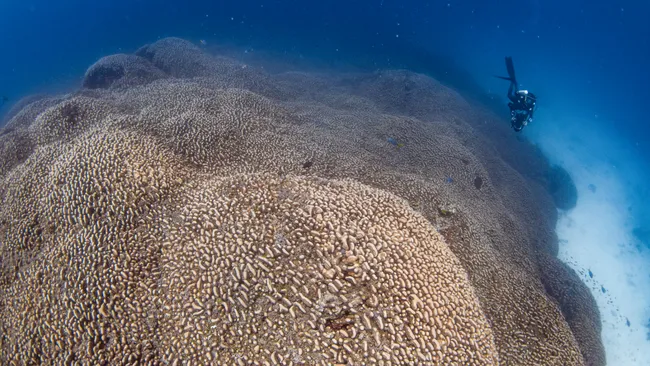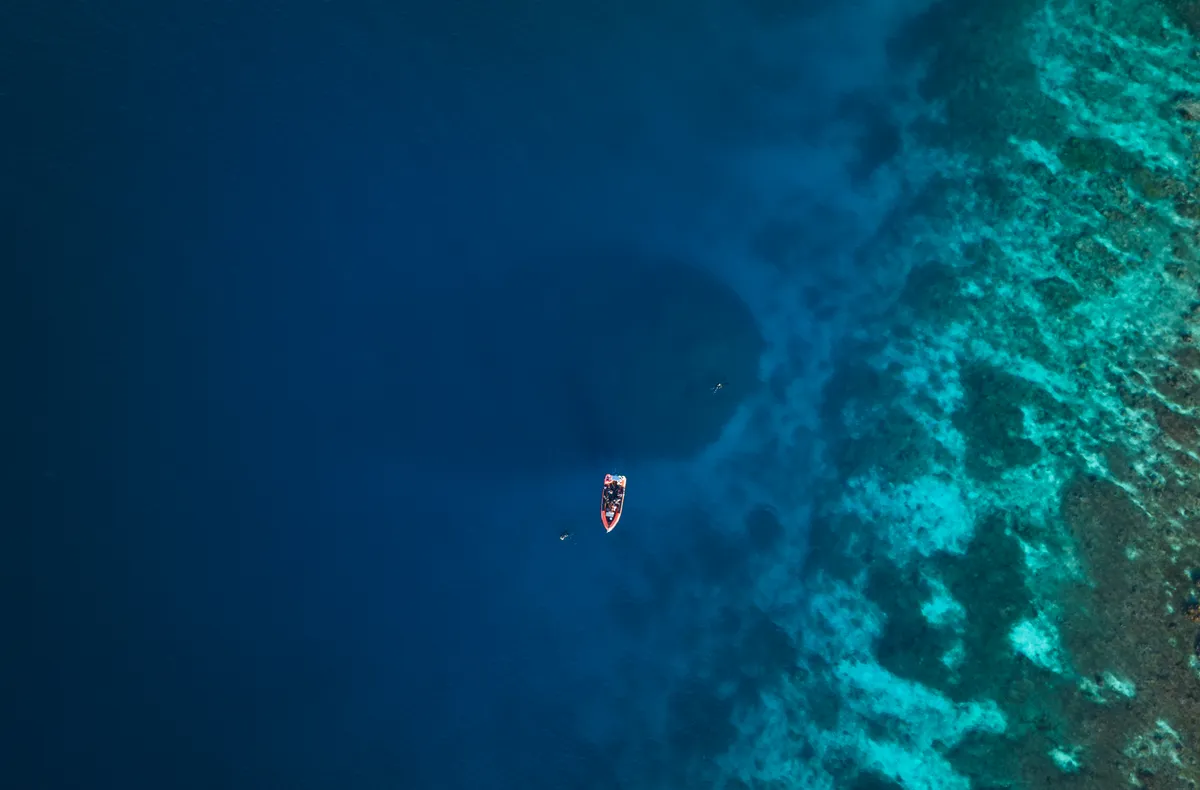In the depths of the southwest Pacific Ocean, researchers have discovered the largest coral ever documented.
Spanning an impressive 111 feet (34 meters) in width, 105 feet (32 m) in length, and standing 18 feet (5.5 m) tall, this colossal organism — so large it's even visible even from space — resides near the Three Sisters Island group in the Solomon Islands.
The coral, identified as Pavona clavus, is a single, standalone structure, unlike the sprawling networks that typically form coral reefs. Scientists estimate it's around 300 years old, making it not just a biological marvel that spans the size of two basketball courts, but also a record of centuries of oceanic conditions.
The coral is around three times bigger than the previous record holder, according to the statement. It's made up of a network of polyps, which are tiny soft-bodied creatures related to anemones and jellyfish that act as the building blocks of corals.
The polyps that form the giant coral came from larvae that settled on the seafloor then multiplied over the centuries.
Source
Spanning an impressive 111 feet (34 meters) in width, 105 feet (32 m) in length, and standing 18 feet (5.5 m) tall, this colossal organism — so large it's even visible even from space — resides near the Three Sisters Island group in the Solomon Islands.
The coral, identified as Pavona clavus, is a single, standalone structure, unlike the sprawling networks that typically form coral reefs. Scientists estimate it's around 300 years old, making it not just a biological marvel that spans the size of two basketball courts, but also a record of centuries of oceanic conditions.
The coral is around three times bigger than the previous record holder, according to the statement. It's made up of a network of polyps, which are tiny soft-bodied creatures related to anemones and jellyfish that act as the building blocks of corals.
The polyps that form the giant coral came from larvae that settled on the seafloor then multiplied over the centuries.
Source























